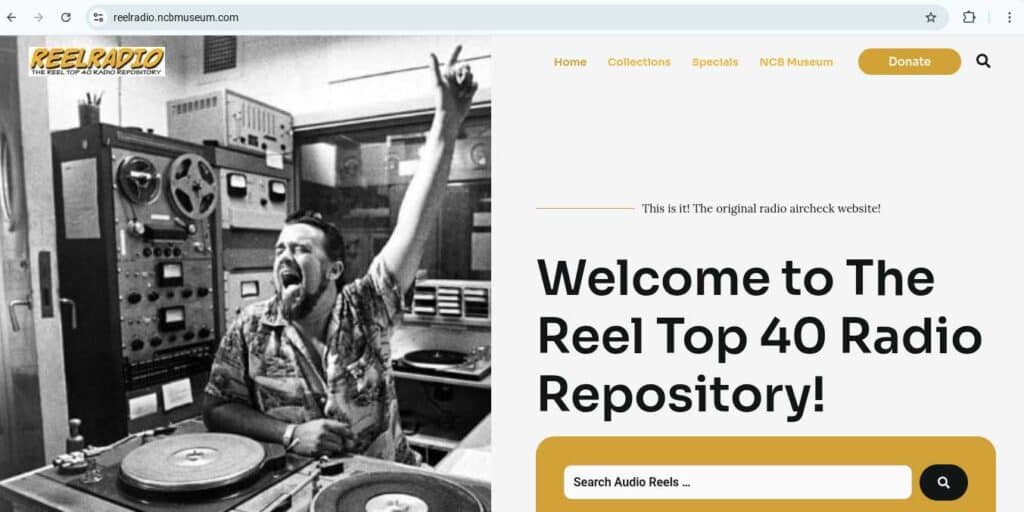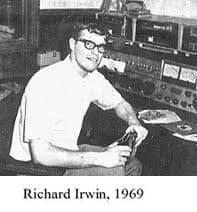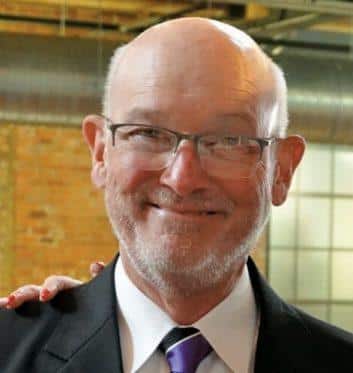It’s the “reel” deal: a repository of over 3500 historically significant air checks and web content from Top 40 radio, known as “ReelRadio,” has been made publicly available thanks to the preservation efforts of the North Carolina Broadcast History Museum.

One of the many artifacts on ReelRadio includes Don Imus interviewing Wolfman Jack on WTEM, Washington, D.C. in a “free-wheeling and fascinating interview about Wolfman’s early years in radio.” Wolfman Jack passed away on July 1, 1995 in North Carolina, about a week after the interview.
Carl Davis, a NCBH Museum trustee who spearheaded the museum’s custodianship of ReelRadio, was a personal friend of the collection’s curator, Richard Irwin, a.k.a. “Uncle Ricky.” They met at East Carolina University’s campus radio station.

“We were the same age, and prior to coming to East Carolina, we had sort of parallel careers,” Davis remembered. “I was working in radio stations in high school, in Hickory. He was working in radio stations in Concord and Kannapolis. and we were like 50 miles apart. But we didn’t know each other. We both ended up in Greenville, NC as freshmen in 1969.”
“We got to be buddies because we were both interested in the same thing,” Davis said. “He only lasted a year there, because he quit going to class. He just spent all of his time at the radio station. I stayed in school and I made it all the way through and worked in local radio here while he left and went to South Carolina, Providence, Rhode Island, and all over.”
Davis explained that he and Irwin remained friends through the years and a lot of people knew they collected “air checks,” which are basically the radio show minus the music.

“Top 40 was really high energy stuff, and in that era, radio created a lot of stars,” Davis said. DJs like Wolfman Jack, Casey Kasem, and Gary Owens became celebrities. A lot of broadcasters collected air checks from the places they worked. When Irwin was living in Sacramento and Top 40 was in a state of decline, he put together an early, basic website in 1996. Disc jockeys from all over the country would mail Irwin tapes and he made them available on his site.
“He was a radio programmer and a computer programmer,” Davis said. “So he did a good job with what he had to work with in 1996. He collected and got to be friends with a lot of people who also shared the same passion and these are all what he called collections.”
Kip Wahlers, an attorney by profession, but also a radio enthusiast, served as president of the Reel Radio board. He has personal memories of the site’s following when Irwin was living and maintaining it.
“It used to be that every Sunday morning Richard would have like two or three exhibits and so you would kind of plan your Sunday coffee around listening to what new things Richard had and that was pretty neat. I don’t think that will ever be duplicated.”
Wahlers said that one of the things that he thinks is really valuable on the ReelRadio site are the comments in the stories about the people.
“These are served like ‘inside baseball’ things that you never would know and never would hear,” he said. “and so it’s my hope that moving forward this becomes a place where researchers can go. And like any other cultural thing to do research and tell the story and preserve the story. As a kid growing up in the 60s and the 70s, Top 40 radio really defined our culture.”
Speaking of Carl Davis contacting him about the NC Broadcast History Museum assuming custodianship of the site, Wahlers said, “This was our goal: to find a permanent home for this
collection so that so that it can be preserved into the indefinite future and having an actual 501(c)(3) with funding. I was just so delighted that Carl took the interest.”
Wahlers admitted it never occurred to him that North Carolina was the place where ReelRadio would go because a good deal of the content is oriented towards California, the history of rock ‘n roll and KHJ. But not only the time Irwin spent in North Carolina made it a natural, but also radio personalities like Carl Kasell, Wolfman Jack, and Big Jack Armstrong (who held a Guinness book record for the “fastest talking human alive”) that made broadcasting names in the state.
Once a subscription based service with some audio formats that had in more recent times gone out of common use, the collection Richard Irwin originated now resides on the museum’s website, www.ncbhmuseum.com and is freely searchable by the public. Beasley Media Group provided the technical expertise, file conversion, and support to see the project to fruition.
“I’m just so grateful to Carl for reaching out. I am so grateful that Beasley has spent the time and the money to get this done,” Wahlers said. “This is a Herculean effort.”
He also thanked Barry Brown and Don Jennett, board members who did a lot of work to keep the site going since Irwin’s death in 2018.
“Richard Irwin seemed to regard it as his life’s work,” Wahlers said. “I think it had a huge impact and I know he was really proud of that impact.”
With the unveiling of the newly hosted site, NCBH Museum President Mike Weeks said, “The ReelRadio project is directly aligned with the museum’s goals to celebrate pioneers of radio and television while preserving the rich and significant history of the broadcasting industry in the state of North Carolina to be universally accessible and useful. I couldn’t be more pleased that this valuable resource is now publicly available.”
The NC Broadcast History Museum is a 501(c) 3 organization. Visit them at www.ncbhmuseum.com.
